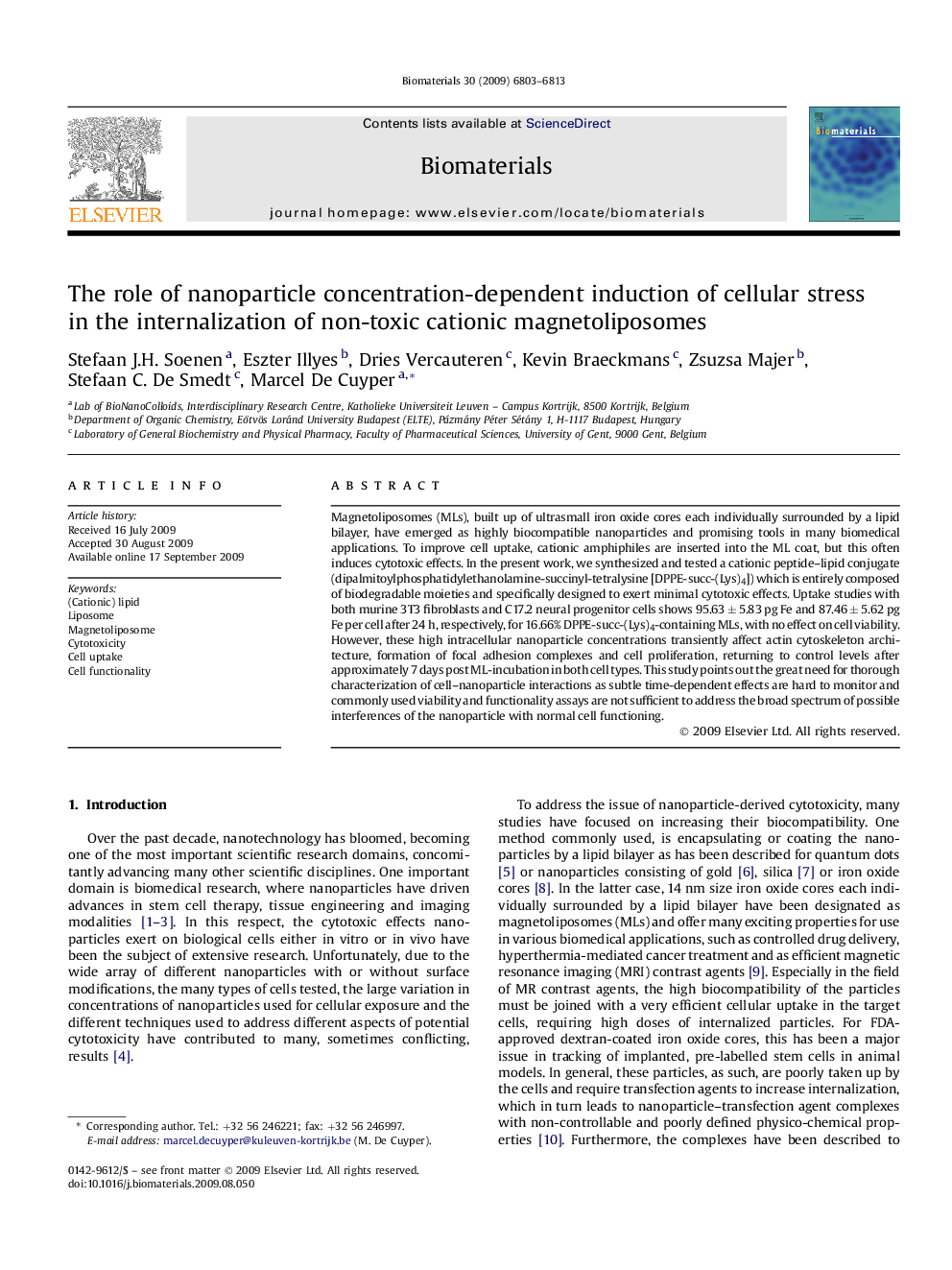| Article ID | Journal | Published Year | Pages | File Type |
|---|---|---|---|---|
| 8763 | Biomaterials | 2009 | 11 Pages |
Magnetoliposomes (MLs), built up of ultrasmall iron oxide cores each individually surrounded by a lipid bilayer, have emerged as highly biocompatible nanoparticles and promising tools in many biomedical applications. To improve cell uptake, cationic amphiphiles are inserted into the ML coat, but this often induces cytotoxic effects. In the present work, we synthesized and tested a cationic peptide–lipid conjugate (dipalmitoylphosphatidylethanolamine-succinyl-tetralysine [DPPE-succ-(Lys)4]) which is entirely composed of biodegradable moieties and specifically designed to exert minimal cytotoxic effects. Uptake studies with both murine 3T3 fibroblasts and C17.2 neural progenitor cells shows 95.63 ± 5.83 pg Fe and 87.46 ± 5.62 pg Fe per cell after 24 h, respectively, for 16.66% DPPE-succ-(Lys)4-containing MLs, with no effect on cell viability. However, these high intracellular nanoparticle concentrations transiently affect actin cytoskeleton architecture, formation of focal adhesion complexes and cell proliferation, returning to control levels after approximately 7 days post ML-incubation in both cell types. This study points out the great need for thorough characterization of cell–nanoparticle interactions as subtle time-dependent effects are hard to monitor and commonly used viability and functionality assays are not sufficient to address the broad spectrum of possible interferences of the nanoparticle with normal cell functioning.
